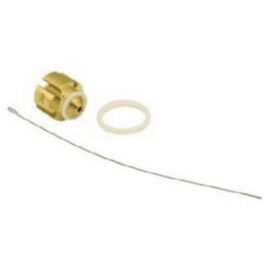
Accounts receivable is shown at its net realizable value, the amount of cash expected to be collected. Losses from bad accounts are anticipated and removed based on historical trends and other relevant information. Thus, the figure reported in the asset section of the balance sheet is lower than the total amount of receivables held by the company.
SiriusPoint reports 84.4% Combined ratio for its Core operations at … – GlobeNewswire
SiriusPoint reports 84.4% Combined ratio for its Core operations at ….
Posted: Wed, 02 Aug 2023 20:10:50 GMT [source]
Cost includes not only the purchase cost but also the conversion and other costs to bring the inventory to its present location and condition. If items of inventory are not interchangeable or comprise goods or services for specific projects, then cost is determined on an individual item basis. Conversely, when there are many interchangeable items, cost formulas – first-in, first-out (FIFO) or weighted-average cost – may be used. Techniques for measuring the cost of inventories, such as the standard cost method or the retail method, may be used for convenience if the results approximate cost. Now that we have our available inventory as of year-end, we need to compare its cost to the estimated selling price.
Net Realizable Value (NRV): Definition & Calculation
This is crucial, as when we sell an item, we have to write-off its cost and its NRV allowance. The Net Realizable Value (NRV) is the amount we can realize from an asset, less the disposal costs. The most often use of the method is when we evaluate inventory and accounts receivable balances. In the context of inventory, net realizable value is the expected selling price in the ordinary course of business minus any costs of completion, disposal, and transportation. Under IAS 2, inventories should be measured at the lower of cost and net realisable value (IAS 2.9). Net realisable value (‘NRV’) is the estimated selling price in the ordinary course of business less the estimated costs of completion and the estimated costs necessary to make the sale (IAS 2.6).
- 2The independent auditors also analyze the available evidence and must believe that it is sufficient to provide the same reasonable assurance in order to render an unqualified opinion on the financial statements.
- Whether the total NRV adjustment the company will recognize in its accounting records will include this additional amount is a matter of management’s professional judgment and knowledge of the business.
- The expected selling price is calculated as the number of units produced multiplied by the unit selling price.
- Despite similar objectives, IAS 21 differs from ASC 330 in a number of areas2.
- This assumption is important, because it presumes that in those circumstances the seller would be able to get the highest price possible for his good.
There are different methods for calculating this depending on the purpose of finding the NRV. Mostly like you won’t have to break out the calculator since the formula is very simple. The percentage of non-defective inventory units is 95%, so there are 9,500 non-defective units. Since 5% of the inventory is defective, that means 500 units require repairs. Volkswagen disclosed ownership of €43.7 billion of inventory, a very slight decline from the €43.8 billion of inventory carried at the end of December 2020. Charlene Rhinehart is a CPA , CFE, chair of an Illinois CPA Society committee, and has a degree in accounting and finance from DePaul University.
Meet the IFRS team
Materials and other supplies held for use in the production of inventories are not written down below cost if the finished products in which they will be incorporated are expected to be sold at, or above, cost. Therefore, a write-down to net realisable value is not allowed simply because the price of raw material fell or the future profit margins will be unsatisfactory. To calculate the sale price per unit for the non-defective units, only the selling costs need to be deducted, which comes out to $55.00. The NRV of the defective Inventory is the product of the number of defective units and the sale price per unit after the repair and selling costs. Accounting conservatism is a principle that requires company accounts to be prepared with caution and high degrees of verification. These bookkeeping guidelines must be followed before a company can make a legal claim to any profit.
- The information contained herein is of a general nature and is not intended to address the circumstances of any particular individual or entity.
- To maintain up-to-date inventory values, accountants do periodic NRV analyses to verify that the value being carried is appropriate.
- Net realizable value (NRV) is the amount by which the estimated selling price of an asset exceeds the sum of any additional costs expected to be incurred on the sale of the asset.
- Keep in mind that this should follow the conservatism principle in accounting.
However, in some instances where we have extensive inventory databases, this can become tedious and impractical. Also, our system does not always provide an easy way to book the adjustment with such detail. Accounting standards (IRFS and US GAAP) require that we apply a conservatism principle when we assess the value of assets and transactions. 1As indicated previously, other versions of generally accepted accounting principles do exist. Knowledgeable decision makers understand that some degree of uncertainty exists with all such balances. By including this amount, company officials are asserting that they have obtained sufficient evidence to provide reasonable assurance that the amount collected will not be a materially different figure2.
I want to show you how you might approach an NRV analysis of inventory in a real-life situation. As we assess as part of our annual close process, let’s look at the balance as of 31 December 2020. Whenever we assess a need to book a write-down, the next step is to recognize it as an expense item in our profit and loss (Income Statement) and decrease the inventory value in our Balance sheet. An alternative is to separate our inventory into groups of similar items and calculate the Net Realizable Value on an aggregated basis. It is important to note that we might have some ‘good’ items offset the effect of such with NRV issues by doing so.
Free Financial Statements Cheat Sheet
The expected selling price is calculated as the number of units produced multiplied by the unit selling price. This is often reduced by product returns or other items that may reduce gross revenue. In regards to accounts receivable, this is equal to the gross amount to be collected without considering an allowance for doubtful accounts. Net realizable value is the estimated selling price of goods, minus the cost of their sale or disposal.
Insolvency practitioners – the dos and don’ts when applying for a … – Macfarlanes
Insolvency practitioners – the dos and don’ts when applying for a ….
Posted: Wed, 05 Jul 2023 07:00:00 GMT [source]
NRV can be applied to any asset, although it’s most commonly used for valuing inventory and accounts receivables (AR). Changes in the FMV or selling price of inventory could cause an NRV adjustment. For AR and other receivables such as notes adp totalsource software receivable, increased collection risk can cause a potential NRV concern. For other assets, such as real estate or fixed assets, market values are affected by time, obsolescence, and economic conditions, any of which can trigger NRV issues.
Difference Between Fair Value & Net Realizable Value
The calculation for Net Realizable Value has a variety of methods to get an answer. No matter which method you use to find the NRV, the value you find must fit the conservative method of accounting reporting. The method of estimating interim inventories should ordinarily be disclosed as an accounting policy in the interim financial statements. NRV estimates the actual amount a seller would expect to receive if the asset(s) in question were to be sold, net of any selling or disposal costs. For instance, inventory is recognized on the balance sheet at either the historical cost or the market value – whichever is lower, so companies cannot overstate the inventory’s value. In practice, the NRV method is most common in inventory accounting, as well as for calculating the value of accounts receivable (A/R).
A company performs an NRV analysis periodically, such as at year’s end or quarter’s end, or any other time when a condition arises that implicates a significant change in the fair market value of an asset. For example, a computer manufacturer’s PC inventory might decline significantly in value when a next-generation processor is released. So, the company would do an NRV analysis that compares the inventory value with the inventory’s estimated NRV. If NRV is lower than the book value, the inventory value of the PCs is written down on the balance sheet and a loss from NRV is recorded on the income statement. Because of various uncertainties, many of the figures reported in a set of financial statements represent estimations.
NRV is a conservative method for valuing assets because it estimates the true amount the seller would receive net of costs if the asset were to be sold. Under the net realizable value method, joint costs are allocated based on the total sales value less costs that can be separable for each product. Once you have the net realizable value for each product, you need to figure out what percentage the net realizable value is out of the total amount. That percentage is then applied to joint costs to determine the amount of joint costs that should be allocated to the product. The cost to prepare the widget for sale is $20, so the net realizable value is $60 ($130 market value – $50 cost – $20 completion cost). Since the cost of $50 is lower than the net realizable value of $60, the company continues to record the inventory item at its $50 cost.
NRV Calculation Example
For example, imagine two different model cars being manufactured on the same assembly line up to a certain point, before splitting off to be finished in different ways specific to their model. The costs up to the split are joint costs and the costs after the split are separable costs. NRV first calculates the selling price of each model less its separable costs.

Each product is then produced separately after the split-off point, and NRV is used to allocate previous joint costs to each of the products. Unlike IAS 2, US GAAP allows use of different cost formulas for inventory, despite having similar nature and use to the company. Therefore, each company in a group can categorize its inventory and use the cost formula best suited to it. As our sales team offers discounts for various reasons, we also calculate the Net Sales for each item.
NRV: What Net Realizable Value Is and a Formula To Calculate It
Net realizable value is an approach to valuing assets fairly and conservatively, and is required for compliance with GAAP and IFRS. This is because assets are initially recorded in company balance sheets based on their historical costs, but over time and for various other reasons, their fair market value might change. NRV analysis is a way to check the balances of assets on the accounting books to ensure that they are properly valued.
NRV is a common method used to evaluate an asset’s value for inventory accounting. Two of the largest assets that a company may list on a balance sheet are accounts receivable and inventory. NRV is a valuation method used in both generally accepted accounting principles (GAAP) and international financial reporting standards (IFRS). Net realizable value (NRV) is the amount by which the estimated selling price of an asset exceeds the sum of any additional costs expected to be incurred on the sale of the asset.

